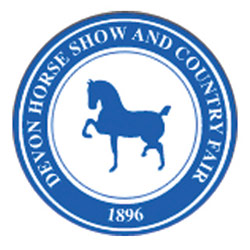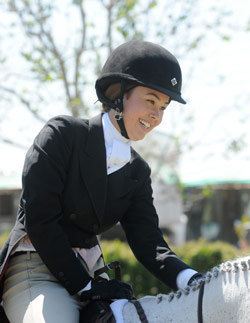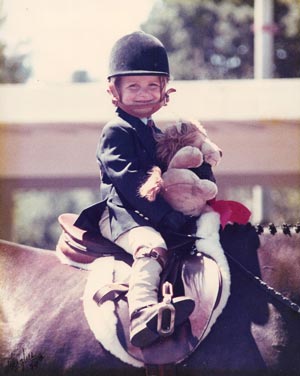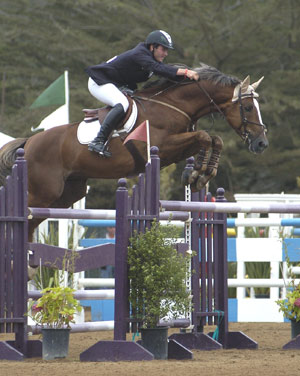By Jackie McFarland
The North American Riders Group
Yet another organization has formed within our sport. And with good reason, as the sport of show jumping has grown to a level where some of the key players believe their concerns are not being addressed. Possibly because those voices were not unified, but just repeated groans and moans of the exhibitors across numerous horse shows, upset by a variety of issues. So along came NARG.
USEF, FEI AND MANAGEMENT DEFINED
Show jumping as a recognized sport is not yet a century old and has evolved extensively through the years. When those involved in the sport realized it needed the support of governance, the American Horse Shows Association (now USEF) was formed as the US national governing body in 1917. When the national organizations of several countries, including the US, Belgium, Norway, Sweden, Denmark, France, Italy and Japan, joined to form an international governing body of equestrian sport, the International Federation of Equestrian Sports (Fédération Équestre Internationale or FEI) was founded in 1921. Now over 134 nations are represented by the FEI.
There are several definitions of government; here’s one simple version: the act or process of governing; specifically: authoritative direction or control.*
More about the missions of these organizations to come, but first we need to define another key player in the power of the sport – the horse show managements. Horse shows have a rich history as well; the Upperville Colt & Horse Show was founded in 1853 and the Devon Horse Show and Country Fair began in 1896, long before governing bodies. Those two traditional horse shows still run today, along with thousands more all over the country. Roughly 1,300 horse shows are recognized annually at various levels and several hundred horse show managements run these events.
Management is defined as: the person or persons who control or direct a business or other enterprise.**
Based on the fact that government and management control our sport and our horse shows, it is essential that those who actively participate in the sport also have a voice. Not to say that riders and trainers don’t sit on boards and committees, as many currently do. For example, David O’Connor, an Olympic Medalist in Eventing, is President of USEF. However NARG was formed to create a unified voice coming from the collective riders, owners and trainers that will speak directly to government and management.

WHO IS NARG
In March 2009 the founders of NARG – McLain Ward, Chris Kappler, Norman Dello Joio, Jimmy Torano, Kent Farrington and Beezie Madden – hosted an evening in Wellington to share their vision “providing a united platform for riders, trainers and owners to voice their concerns and ensure the integrity of our sport.” Several hundred attended. Later that year they asked Murray Kessler to take on the role of Director. Kessler is an ideal fit, as he has worn the tie of a successful businessman, running a public company, UST, Inc. for a decade and then negotiated the sale of that company. He also dons the helmet of amateur horse show exhibitor and the baseball cap of horse show dad/husband with a wife and daughter who both compete successfully. Talented and driven, Kessler’s fifteen-year-old daughter Reed is beginning to compete and ribbon at the grand prix level. Kessler seeks to take the passion and exuberance of those involved with the fledgling organization and harness it into a productive voice at the levels of government and management. He will help NARG unify and represent the group that essentially makes the show jumping world turn – the owners, riders and trainers.
RIDERS, GOVERNORS AND INTERNATIONAL FARE – IS IT FAIR?
So the USEF, USHJA, FEI and top level show managements all seek to satisfy numerous missions and goals that are essential to our sport but can at times negatively affect the very people and horses they represent. NARG represents those people.
As simply stated at NARG.org: The mission of the North American Riders Group is to unite professional riders and trainers to use their collective strength to make show jumping in North America the best in the world.
When it comes to governance, the USEF has a large staff, Executive Board and numerous special committees working year round to continuously achieve the long list of goals. The mission of the USEF is quite extensive; an excerpt includes these statements: As the National Governing Body (NGB) of Equestrian Sport in the United States we will inspire, encourage interest in, and regulate equestrian competition by ensuring the safety and well-being of horses… ensure the enforcement of fair and equitable rules and procedures… and, endeavor to advance the level of horsemanship in the United States. (Full Mission Statement along with a list of 24 ways in which the USEF will accomplish their mission is on USEF.org). Also a player in the governance of our sport is the newest affiliate on the block, the United States Hunter Jumper Association (USHJA). Started just under six years ago, this organization has grown, developed programs and become quite influential in our niche.
NARG seeks to work with, and preferably not against, the governing bodies although at times it is challenging as the most recent FEI World Cup debacle illustrates. The FEI states: The primary mission of the FEI is to advance the orderly growth of equestrian sport worldwide by promoting, regulating and admin-istering humane and sportsmanlike international competition in the traditional equestrian disciplines. However as two USEF formal protests, an official NARG release, McLain Ward himself and several thousand equestrians around the world can attest, the actions of a few can negatively affect the overall missions and goals of government, management and high level competition. As we seek to play on a level playing field where no one has an unfair advantage, all parties need to be considered and heard, and unfortunately in this case the governing body overruled.
As those involved with the above incident try to get to the bottom of the issue and see that it not be repeated, it serves as further proof that fair sport is not to be placed in the hands of a few.
International competitions are the pinnacle of our sport and our riders have worked hard to earn their placings amongst the top European equestrians. The top 16 horse and rider combinations from the WEG qualifiers have been divided into three tours, with the first one beginning this week at the CSIO 5* in La Baule, France. We all look forward to a fabulous and fair Alltech FEI World Equestrian Games this fall.
NARG ON A NATIONAL LEVEL
The opportunity to compete or even understand show jumping at the International level is created from the horse show world. The show managers provide the arena(s) where horses and riders learn, train, evolve and potentially win. Of the thousands of competitors who pay to play at these shows, only a small percentage has the chance and ability to make it to the 1.60m level. The horse show management serves that group as well as the short-stirrup, amateur hunter, equitation rider and the hosts of other divisions offered at a horse show. Suffice to say it’s complicated to run a horse show well, from following the rules of governance, to serving your clients (exhibitors, trainers, owners and sponsors) and most importantly heeding to the horses welfare.
That stated, there are issues with management. The horse show steward by definition is a licensed official tasked with the responsibility of interpreting and enforcing the rules of the organization that sanctions the horse show and submitting reports accordingly. However this individual is hired by the horse show management, hence writing up a negative report regarding the party who hired you may not be good for your reputation nor your job security. That issue as well as the proposal for horse shows to uphold certain standards to maintain their rating and mileage protection created some heated discussions at the USHJA and USEF Annual Meetings this past year. Various parties involved in government, management and now NARG are working on adapting these standards to work for all involved – from the exhibitor who pays the entry fees, trainer fees, hauler, braider, groom etc. to the manager who pays the governing body for the license, officials, course designers, ring crew, office staff, etc. to the USEF, USHJA and a slew of other organizations who collect fees and in turn support our sport at the local, regional and national levels.
It’s a long and arduous process to propose, argue for and stand behind change. The USEF, USHJA, NARG and show managers understand this and are committed to seeing the necessary changes for our sport to endure, evolve and nurture success.
Kessler explains, “I am most encouraged that horse show managers are starting to view us as a partner and not an adversary. We are gaining lots of momentum. We were by McLain’s side in Geneva, are evaluating shows and have persuaded several major horse shows to significantly upgrade footing. We are proposing a rule change to the FEI for on site appeals on hypersensitivity. Look for announcements on these in the near future!”
A West Coast NARG meeting is in the works; so stay tuned for more information. To find out more, go to NARG.org. Several in depth articles and a statement from President Chris Kappler are also on PhelpsSports.com.
Thank you to Murray Kessler for meeting with us about NARG.
Dictionary.com:
* Merriam-Webster’s Dictionary of Law. Merriam-Webster, Inc. 11 May. 2010.
** The American Heritage® Dictionary of the English Language, Fourth Edition. May. 2010




 I was curious about the impact that Joe Fargis had on Kevin’s career and training methods.
I was curious about the impact that Joe Fargis had on Kevin’s career and training methods. The cavalletti poles should get your horse’s hind end up underneath himself, the crossrail encourages straightness, and trotting magnifies your horse’s jump as well as the rider’s balance. After landing off of the crossrail, your horse needs to respond to your leg by going up into your hand. Having the distance already set up to the combination makes it easier.
The cavalletti poles should get your horse’s hind end up underneath himself, the crossrail encourages straightness, and trotting magnifies your horse’s jump as well as the rider’s balance. After landing off of the crossrail, your horse needs to respond to your leg by going up into your hand. Having the distance already set up to the combination makes it easier.